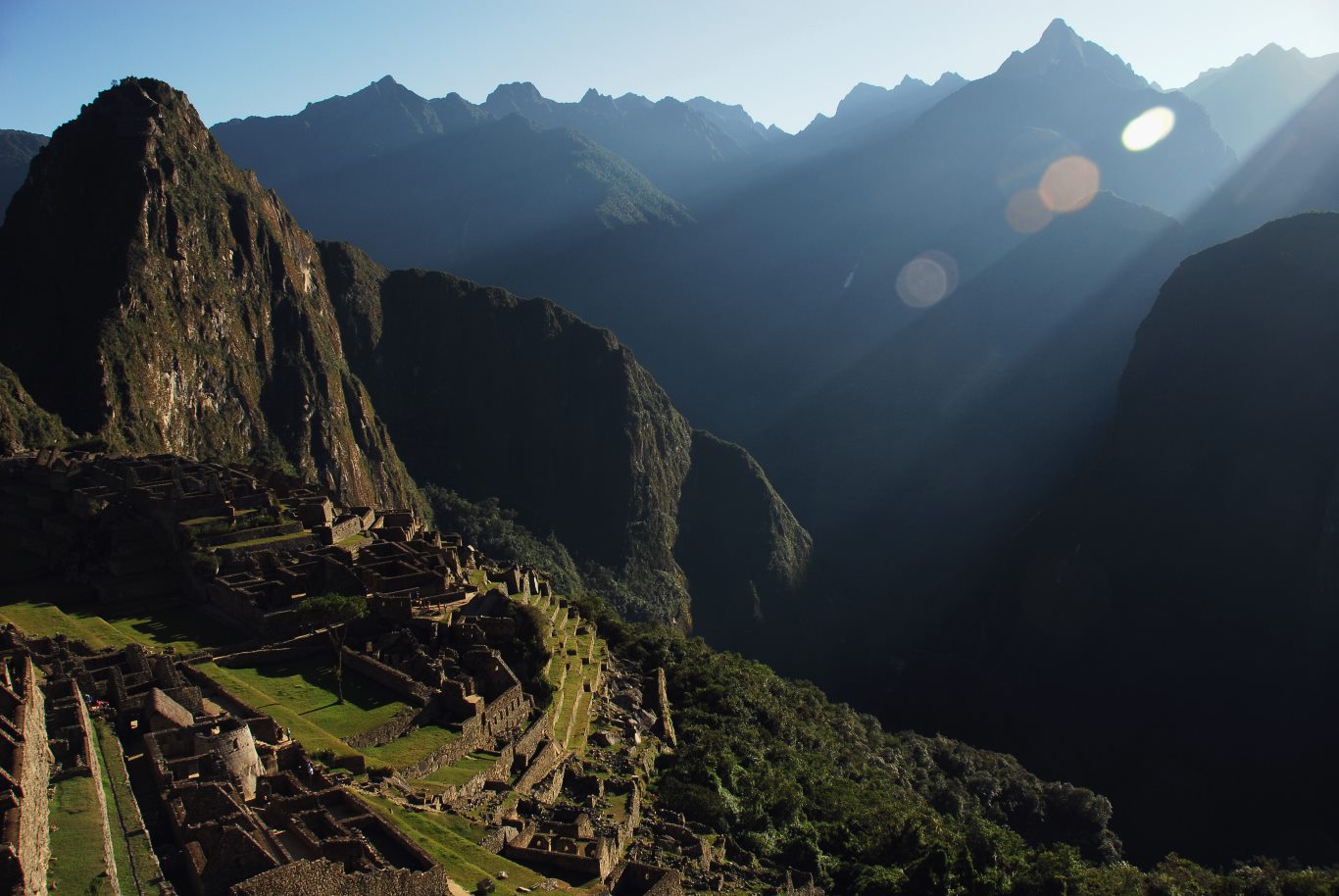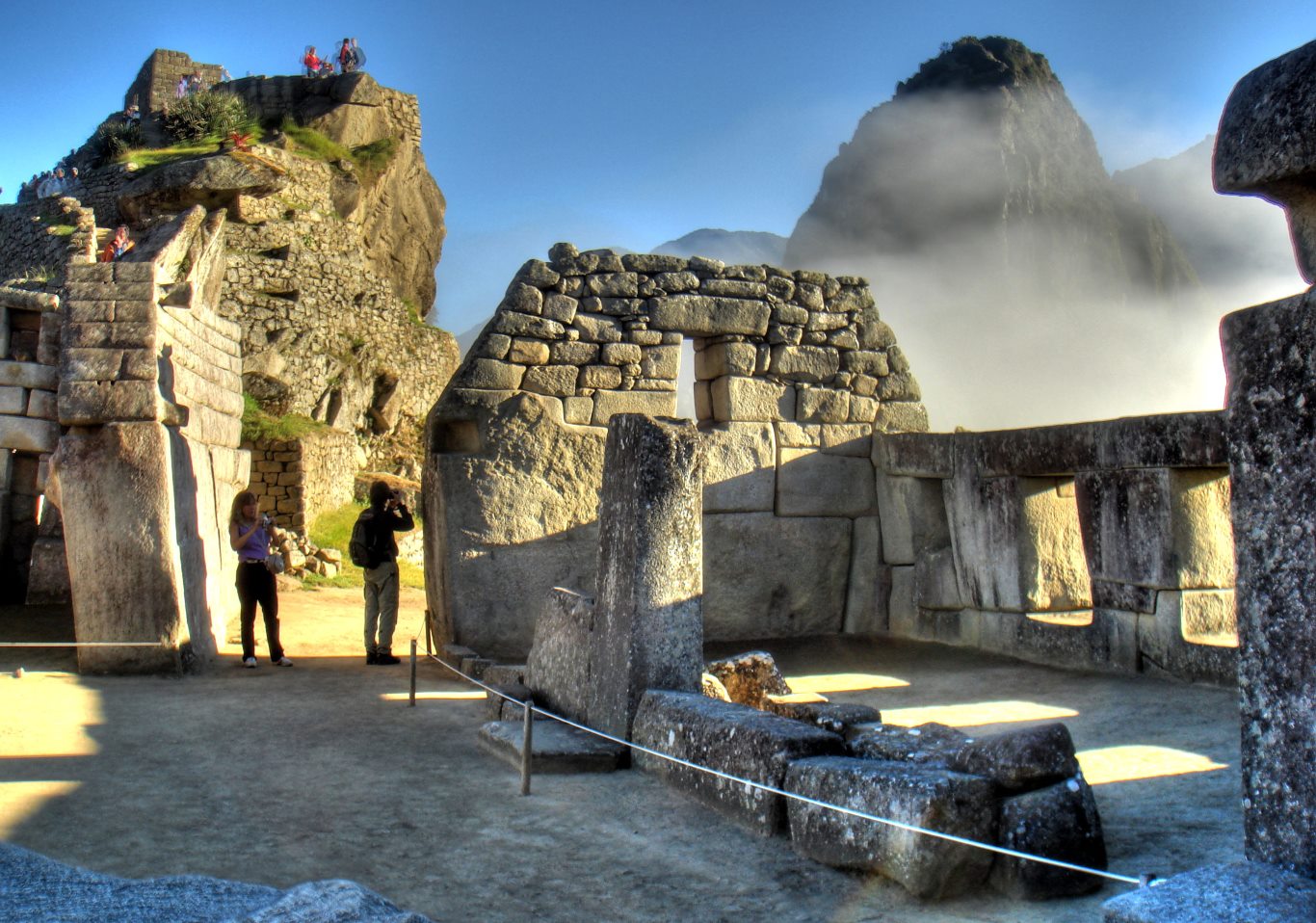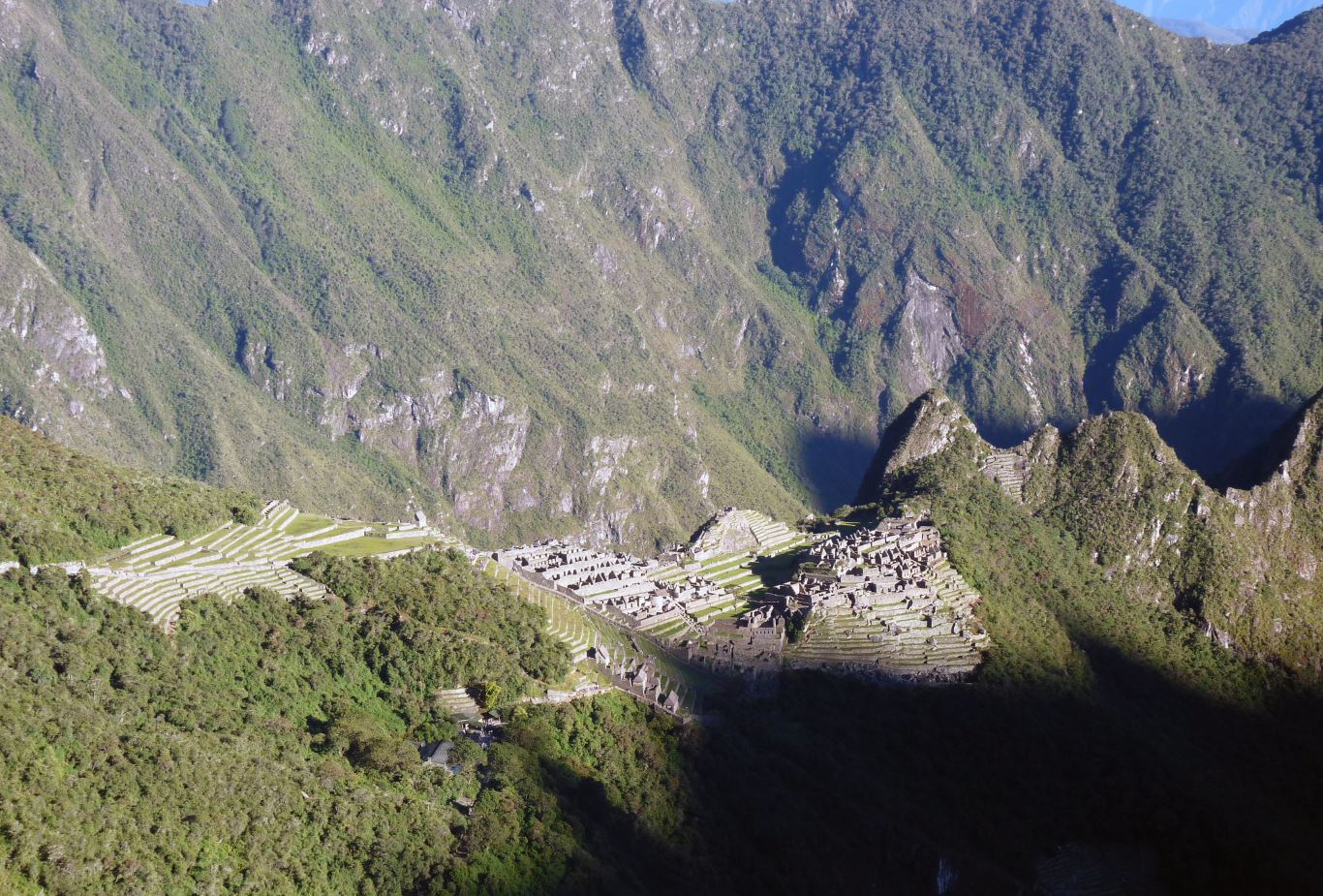The sun rises up above Machu Picchu. Photo by Tinou Bao, flickr.com.
First things first: you’re not going to see a genuine sunrise at Machu Picchu. There’s no unobstructed stretching-to-the-horizon sunrise to be seen. The sun first has to rise up above the mountains that surround Machu Picchu, by which time the archaeological site is already bathed in a half-light.
And now that we’ve got that out of the way…
What Time Is the Sunrise at Machu Picchu?
The actual sunrise times at Aguas Calientes (the town below Machu Picchu) differ by an hour depending on the time of year. The earliest sunrise is at 5:13 a.m. in November, and the latest sunrise is at 6:13 a.m. in July.
The first buses leave Aguas Calientes for Machu Picchu at 5:30 a.m. and Machu Picchu opens at 6 a.m. So even if you manage to catch the first bus up to Machu Picchu, there’s a good chance that the morning light will have started to illuminate the archaeological site and its surroundings, even if the direct rays of the sun have not.
After that, it could still be about an hour after the actual sunrise until the sun rises up above the mountains.
Morning sunlight floods through the ruins of Machu Picchu. Photo by dann toliver, flickr.com.
The big question is: Is it worth getting up to Machu Picchu early to watch the “sunrise”? Well, it largely depends on the weather. The site is often so shrouded in cloud and mist that watching the sun come up is anticlimactic and Machu Picchu remains largely obscured.
But if you’re lucky, you’ll see a beautiful sight even when it’s cloudy: The cloud and fog dissipating, slowly revealing the bones of Machu Picchu, and then its full body, like a ghost ship emerging from a misty sea. The rays of the sun will rise up through the clefts and entranceways of the Inca stonework, and all will be right with the world.
Sometimes, on a dry and bright morning, you’ll have a clear view of the sun’s first rays spreading across Machu Picchu, as you can see in the time lapse video below.
Again, it’s a matter of luck. You also need to take into account the early-morning onslaught of tourist arrivals, all trying to get to Machu Picchu for the “sunrise” before each other — and all at the same time.
For that reason, it’s worth considering an afternoon visit to Machu Picchu, which is quieter. Some photographers also say that the light before sunset, between 4 p.m. and 5 p.m., is the best for photographing Machu Picchu.
Machu Picchu and Sunrise from the Sun Gate
If you trek along the classic Inca Trail to Machu Picchu, whether for two days or four, you’ll normally have an extremely early morning start on the final day. This gives you time to trek to the Sun Gate — Intipunku — for sunrise.
Again, how much you’ll see depends on the weather, and you won’t see an actual sunrise but rather the sun rising up over the mountains. You will, however, have an excellent view over Machu Picchu and its nearby mountains — if they aren’t completely shrouded in cloud. It’s best to not expect a perfect view, just to avoid disappointment after waking up at 4 a.m.
Machu Picchu Sunrise Tours
A quick note on so-called Machu Picchu “sunrise tours,” which some Machu Picchu and Inca Trail tour companies advertise as a Machu Picchu tour option. It tends to be a two-day non-trekking tour that leaves Aguas Calientes very early on the second day, to arrive at Machu Picchu in time for sunrise.
As a selling point, tagging on the “sunrise” element sounds great. But considering the sunrise at Machu Picchu isn’t a guaranteed spectacular — and it’s not a genuine sunrise — it seems more appropriate to think of these tours as “early bird” tours.
These tours don’t enter the archaeological site of Machu Picchu any earlier than other tours (i.e. they don’t manage to get in before the 6 a.m. opening time), so don’t expect anything too unique about a Machu Picchu “sunrise tour.”
From from the Sun Gate as the morning shadow retreats from Machu Picchu. Photo by karlnorling, flickr.com.








Share This
Thanks for commenting! If your comment requires an answer, I'll try to reply as soon as possible. In the meantime, please share this post with your friends.